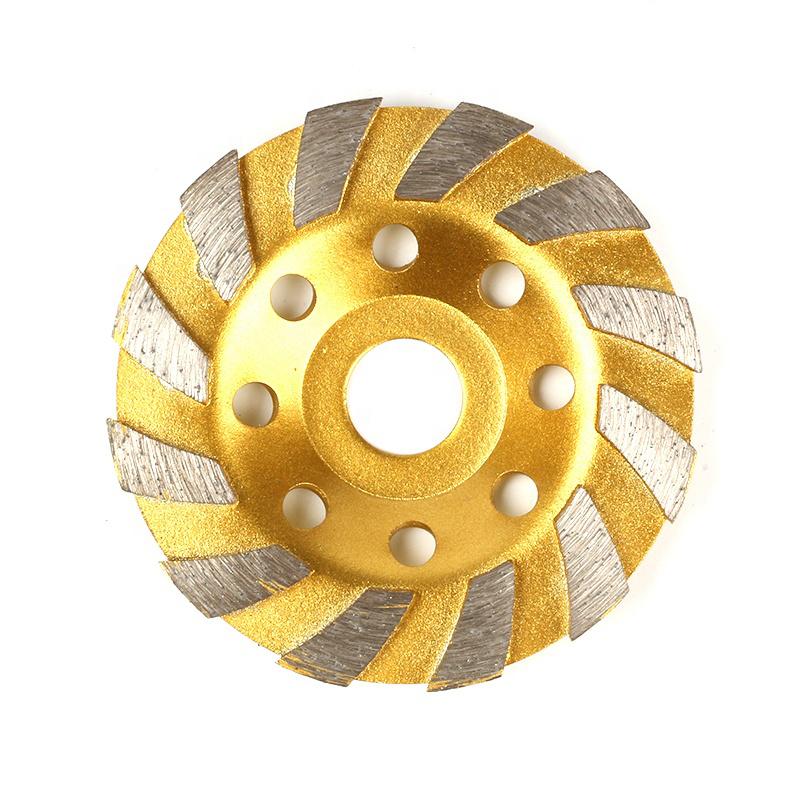The structure of the Diamond cup grinding wheel is different from the ordinary abrasive grinding wheel. Generally, it is composed of a diamond abrasive layer, a transition layer, and a matrix. The working layer, also known as the diamond layer, is composed of abrasives, bonding agents and fillers, and is the working part of the grinding wheel. The transition layer, also known as the non-diamond layer, is composed of bonding agents, metal powder, and filler. It is the part that firmly connects the diamond layer to the substrate.
The base body is used to receive the abrasive layer and is firmly clamped on the main shaft of the grinder with a flange during use. Generally, metal bond products use steel and alloy steel powder as the matrix; resin bond selects aluminum alloy and bakelite as the matrix. It is made of aluminum, steel or bakelite, and plays the role of supporting the working layer and clamping abrasive tools. The molding quality of the grinding wheel and the accuracy of the users have a lot to do with the matrix.
Due to the characteristics and advantages of diamond abrasives, diamond grinding wheels have become the ideal tool for grinding hard and brittle materials such as glass, ceramics, gems, stone, and cemented carbides. With the progress of the times, the development of science, the needs of society, the development of new materials, and the continuous development of grinding processing towards high-quality, high-precision, high-efficiency, and automation, the role of diamond grinding wheels is becoming more and more obvious. Metal bond The diamond grinding wheel has high holding strength for abrasive grains, long service life, and low wear so that the diamond grinding wheel can give full play to its wear resistance and strong cutting ability in high-speed and ultra-high-speed, high-efficiency, and high-precision grinding, especially in hard, brittle, and difficult processing. The material shows its obvious advantages and is widely used.
Precautions For The Use Of Diamond Cup Grinding Wheel



